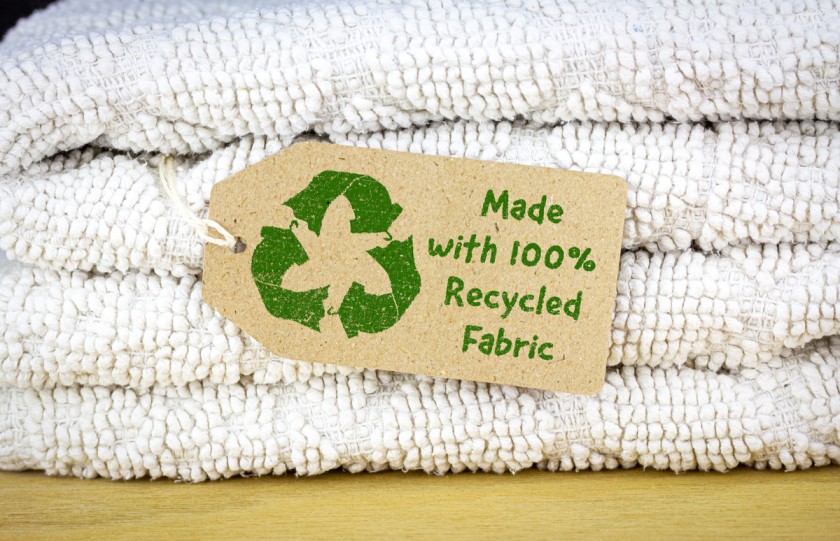4 Sustainability Claims Brands Have To Stop Making



Many companies have been misleading their customers by claiming they offer sustainable clothing. They develop catchy slogans but fail to have a proven positive impact.
Greenwashing occurs when a company spends more time and money portraying itself as environmentally friendly than on genuine environmental actions.
One can identify it by the use of certain words on the packaging and in advertising, such as all-natural, non-toxic, and eco-friendly. Another sign is when brands simply use a green background and images of leaves and trees to indicate that the product contributes to the fight against climate change.
4 Claims about Sustainable Clothing that Brands Need to Stop Making

Here are the top claims that brands make when regarding sustainability.
1. “We are the first…”
Being the first does not indicate that they are the best. Instead, the brands are less likely to know what they are doing, as they have not gotten the chance to learn from anybody else.
There is a 95% chance that they have not done enough research about it. At least five other companies would be trying to do the same thing simultaneously.
2. “We are 100% sustainable…”
Some brands claim that they use 100% sustainable clothing. However, BCI cotton and fruits mixed with plastic do not count to be 100% sustainable.
No company is 100% sustainable. Therefore, this statement proves that the brand is more concerned about its appearance than transparency and honesty. People are clever not to believe this false claim.
3. “We use organic materials…”
Fast fashion brands have a practice of publicizing their green initiatives publicly.
For example, in 2019, H&M debuted its “Conscious” range of “green” clothing. It promises to use recycled polyester and “organic” cotton. On the other hand, the line is only a marketing ploy to make themselves appear more environmentally conscious.
Marketing-friendly terms like sustainable, green, and environmentally friendly have no legal meaning.
The Norwegian Customer Authority then criticized H&M for the “misleading” marketing of their Conscious Collection. The authority claimed that “the information provided regarding sustainability was insufficient, especially given that the Conscious Collection is represented as a collection with environmental benefits.”
4. “We use natural degradable fibers…”
Brands frequently claim to use natural degradable fibers such as viscose, rayon, and bamboo. However, it is critical to understand how the supply of these materials works to establish their closed-loop sustainability and trade-offs.
Bamboo, for example, is a fast-growing fiber that is regularly exposed to toxic pesticides and chemicals when it is transformed into the fabric, making it highly polluting. Similarly, viscose might contribute to deforestation unless its source is certified. Vegan does not imply sustainability because it is derived from oil, which is harmful to the environment.
Principles for Sustainability Claims

Let us look at some basic principles behind sustainability.
1. Reliability: Build the claims on a reliable basis
Sustainability claims must be truthful, reliable, and based on widely-accepted methods.
A company must not rely on its labeling standard, as it is not independently guaranteed. Instead, it should depend on an acknowledged technique such as the Global Organic Textile Standard (GOTS) for supporting its claims.
All claims should be third-party validated rather than self-assessed for increased reliability.
2. Relevance: Talk about major improvements in areas that matter
Sustainability claims must include information on essential characteristics of the product that significantly contribute to its sustainability profile. Such product features include its processes or materials.
Claims must also go above what is necessary by law. The brand should not use them to hide areas lacking sustainability performance.
3. Clarity: Make the information useful for the consumer
Companies should avoid using ambiguous language and instead provide information to improve their customers’ consumption habits. Additionally, consumers must be able to distinguish between specific product information.
Notably, brands cannot utilize a single issue to declare a product sustainable as a whole. For example, they might produce the product responsibly. But it cannot be labeled "sustainable" if workers are not guaranteed fair wages or working conditions.
4. Transparency: Satisfy the consumer’s appetite for information and avoid hiding
Companies must make the information behind a claim available to consumers and make it understandable. It must state the procedures, data sources, or assumptions used to arrive at a sustainability claim.
It is vital to strike a balance between offering thorough information and providing broad, easy-to-understand information.
5. Accessibility: Let information get to the customer, not the other way around
Claims should be easily visible and accessible to consumers when and where they need them. Companies should communicate claims across various channels and, when space is restricted, provide links or codes to more comprehensive information.
Conclusion
Making inaccurate statements in green marketing hurts the brands and can have serious financial consequences. Sustainable clothing is not just a trend. Customers are increasingly prioritizing businesses that they consider environmentally responsible, while shunning companies that do not satisfy their expectations.
Maintaining transparency about the actions and incorporating sustainability into the brand's basic beliefs can help them stay ahead of the competition. The prize will be the audience's long-term loyalty.
Fashinza has tons of suppliers and vendors who sell and deal in sustainable clothing. Visit our website to find an appropriate manufacturer today!



















